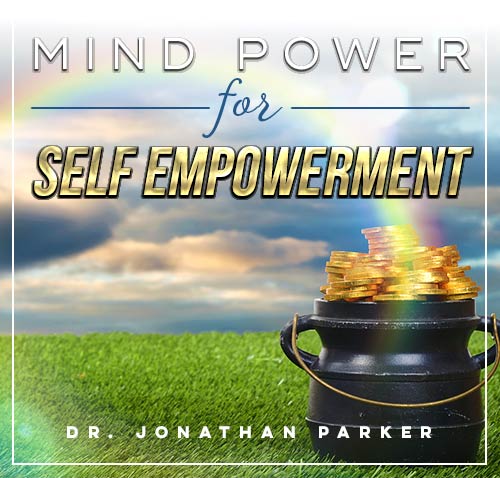The Role of the Subconscious Mind in Sleep and Dreams

Hey there, amazing readers! 🖐️ Just a quick note: yes, we know there are a lot of ads here. Trust us, we get it—it’s not the prettiest look, but they help us keep this blog alive and kicking. Those pesky little ads cover the costs of all the behind-the-scenes magic, from hosting and tech stuff to creating content we hope you’ll love.
We’re committed to delivering quality posts, and your support (even just sticking around despite the ads) means everything to us. So, bear with us, and thanks for helping us keep the good vibes rolling. Now, on to the fun stuff! 😉
TRANSLATE BUTTON AT THE END OF THE ARTICLE
Understanding the Subconscious Mind
The subconscious mind is a powerful force that operates beneath our conscious awareness, influencing our thoughts, emotions, and behaviors.
While the conscious mind is responsible for logical reasoning and decision-making, the subconscious mind processes information on a more intuitive level.
It stores memories, beliefs, and emotions that shape our perceptions of the world around us.
The subconscious mind is like a vast reservoir of information that we may not always be aware of, but that guides our actions and reactions in profound ways.
The Importance of Sleep for Brain Health
Sleep plays a crucial role in maintaining brain health and overall well-being.
During sleep, the brain goes through various stages of restorative processes that are essential for cognitive function, memory consolidation, and emotional regulation.
Lack of sleep can lead to impaired concentration, memory problems, and mood disturbances.
Adequate sleep is vital for supporting optimal brain function and mental clarity.
The quality and quantity of sleep directly impact our cognitive abilities and emotional resilience.
The Subconscious Mind During Sleep
While we are asleep, the subconscious mind becomes more active as the conscious mind takes a back seat.
This is when the subconscious mind processes emotions, memories, and experiences from the day.
Dreams are a reflection of this subconscious activity, revealing hidden thoughts, fears, and desires.
The subconscious mind uses dreams as a way to communicate important information to the conscious mind, often in symbolic or metaphorical form.
Understanding the role of the subconscious mind during sleep can provide valuable insights into our innermost thoughts and feelings.
How Dreams are Formed
Dreams are a complex phenomenon that involves various regions of the brain working together.
During the rapid eye movement (REM) stage of sleep, the brain is highly active, creating vivid and often surreal dream experiences.
Dreams are thought to be a way for the brain to process emotions, memories, and unresolved issues.
They can be influenced by recent events, past experiences, and subconscious thoughts.
Dream content can vary widely from person to person and may reflect individual concerns, desires, or fears.
Processing Emotions During Dreaming
Dreams serve as a way for the subconscious mind to process and regulate emotions.
Through dreams, we may confront unresolved feelings, fears, or anxieties that we may not be consciously aware of.
Dreaming allows us to explore and express our emotions in a safe and symbolic way.
By analyzing dream content, we can gain a deeper understanding of our emotional landscape and work through inner conflicts.
Paying attention to recurring themes or symbols in dreams can provide valuable insights into our emotional state.
The Role of Memories in Dreams
Memories play a significant role in shaping the content of our dreams.
The subconscious mind draws on past experiences and memories to create dream scenarios.
Dreams can sometimes bring up forgotten memories or repressed emotions that need to be addressed.
The process of dreaming allows the brain to consolidate memories and integrate new information with existing knowledge.
By examining the memories that surface in dreams, we can uncover hidden insights about ourselves and our past experiences.
Interpreting Dreams and Symbols
Dreams are full of symbols and metaphors that can provide clues to our subconscious thoughts and feelings.
Interpreting dream symbols can help us uncover deeper meanings and gain insights into our innermost desires and fears.
Common dream symbols, such as flying, falling, or being chased, often have universal meanings that can shed light on our emotional state.
Keeping a dream journal and reflecting on recurring symbols or themes can help us decode the messages from our subconscious mind.
Impact of Subconscious Thoughts on Sleep
Our subconscious thoughts and beliefs can significantly impact the quality of our sleep.
Negative or anxious thoughts can lead to sleep disturbances, while positive and calming thoughts can promote restful sleep.
Engaging in relaxation techniques, such as deep breathing or meditation, can help quiet the subconscious mind and prepare the body for sleep.
By addressing underlying fears or worries that may be lingering in the subconscious, we can create a more conducive environment for restful sleep.
The Connection Between Sleep and Creativity
Sleep plays a vital role in fostering creativity and problem-solving abilities.
During sleep, the brain consolidates information, forms new connections, and processes complex ideas.
Dreams can sometimes inspire creative insights or innovative solutions to problems.
Artists, writers, and inventors throughout history have credited their dreams with providing them with inspiration for their work.
By nurturing a healthy sleep routine, we can harness the creative potential of our subconscious mind and unlock new ideas.
Using Dreams to Solve Problems
Dreams have been used throughout history as a tool for problem-solving and decision-making.
The subconscious mind has a remarkable ability to work through challenges and dilemmas during sleep, presenting us with creative solutions or alternative perspectives.
Keeping a dream journal and reflecting on dream content can help us tap into this problem-solving potential.
By paying attention to recurring themes or symbols in dreams, we can uncover hidden insights that may guide us towards resolution or clarity in waking life.
Techniques to Access the Subconscious Mind
There are various techniques that can help us access and explore the depths of our subconscious mind.
Meditation, visualization, and hypnosis are tools that can quiet the conscious mind and allow the subconscious to surface.
Keeping a dream journal and practicing lucid dreaming can also help us gain insights into our inner thoughts and desires.
By engaging in practices that promote self-reflection and introspection, we can establish a deeper connection with our subconscious mind and unlock its hidden wisdom.
Enhancing Sleep Quality through Mindfulness
Mindfulness practices can play a significant role in improving the quality of our sleep.
By cultivating awareness of our thoughts, emotions, and sensations, we can create a more peaceful and relaxing internal environment.
Mindfulness meditation can help calm the mind and reduce stress, leading to better sleep hygiene.
Engaging in mindfulness techniques before bedtime, such as deep breathing or body scanning, can prepare the body and mind for restful sleep.
By incorporating mindfulness into our nightly routine, we can enhance our sleep quality and support overall well-being.
Conclusion
The subconscious mind plays a crucial role in shaping our experiences during sleep and dreams.
By understanding the functions of the subconscious mind and its influence on our thoughts and emotions, we can gain valuable insights into our inner world.
Dreams serve as a window into the subconscious, offering us a glimpse of our deepest desires, fears, and unresolved issues.
By paying attention to dream content and symbols, we can unlock the hidden messages from our subconscious mind and harness its problem-solving potential.
Enhancing our sleep quality through mindfulness practices can further support the connection between the conscious and subconscious mind, promoting overall well-being and cognitive function.
By exploring the depths of our subconscious mind, we can tap into a wellspring of creativity, insight, and self-discovery.

The Enlightenment Journey is a remarkable collection of writings authored by a distinguished group of experts in the fields of spirituality, new age, and esoteric knowledge.
This anthology features a diverse assembly of well-experienced authors who bring their profound insights and credible perspectives to the forefront.
Each contributor possesses a wealth of knowledge and wisdom, making them authorities in their respective domains.
Together, they offer readers a transformative journey into the realms of spiritual growth, self-discovery, and esoteric enlightenment.
The Enlightenment Journey is a testament to the collective expertise of these luminaries, providing readers with a rich tapestry of ideas and information to illuminate their spiritual path.
Our Diverse Expertise 🌟
While our primary focus is on spirituality and esotericism, we are equally passionate about exploring a wide range of other topics and niches 🌍📚. Our experienced team is dedicated to delivering high-quality, informative content across various subjects ✨.
To ensure we provide the most accurate and valuable insights, we collaborate with trusted experts in their respective domains 🧑🏫👩🏫. This allows us to offer well-rounded perspectives and knowledge to our readers.
Our blog originally focused on spirituality and metaphysics, but we’ve since expanded to cover a wide range of niches. Don’t worry—we continue to publish a lot of articles on spirituality! Frequently visit our blog to explore our diverse content and stay tuned for more insightful reads.






